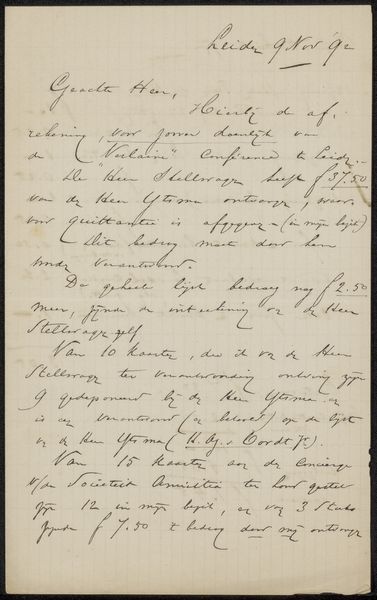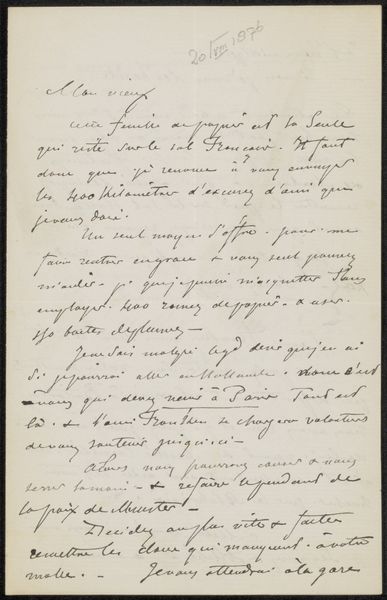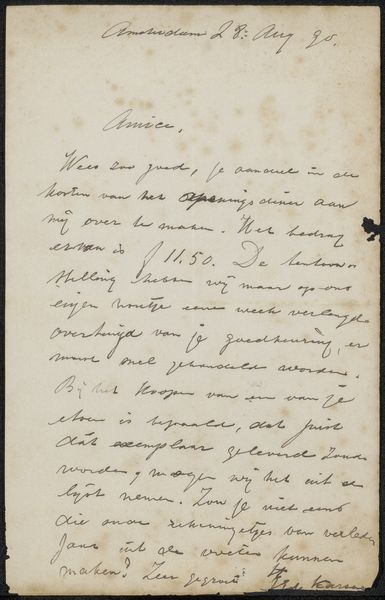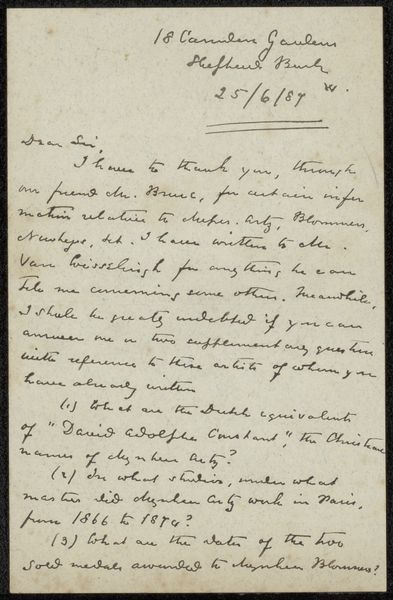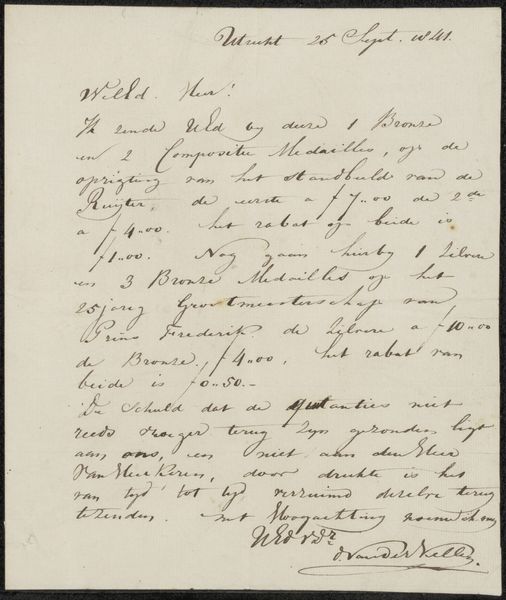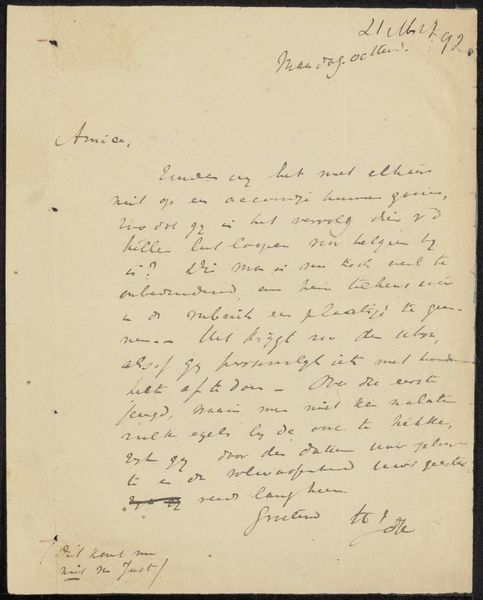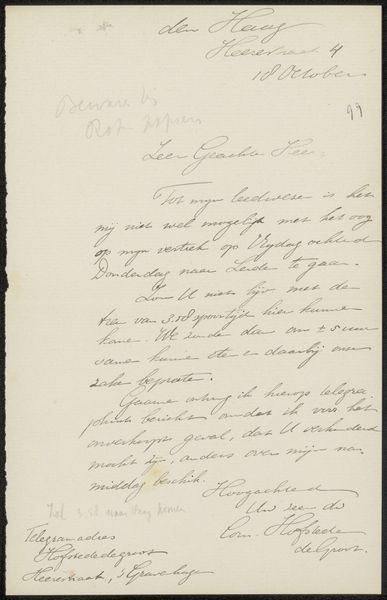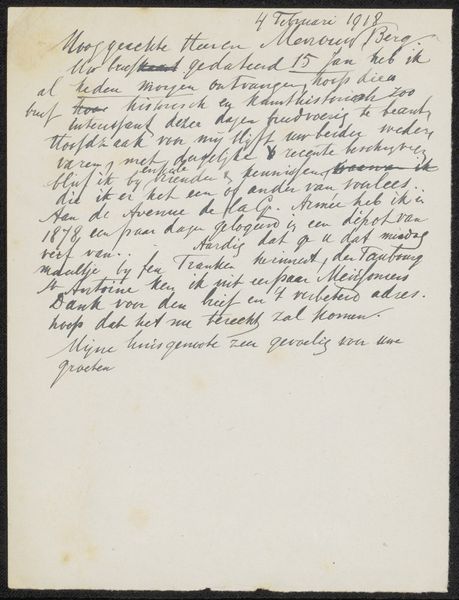
drawing, paper, ink
#
portrait
#
drawing
#
hand written
#
sketch book
#
hand drawn type
#
paper
#
personal sketchbook
#
ink
#
hand-written
#
hand-drawn typeface
#
intimism
#
journal
#
visual diary
#
symbolism
#
sketchbook drawing
#
sketchbook art
Copyright: Rijks Museum: Open Domain
Editor: This is “Brief aan Philip Zilcken,” thought to be from 1895, by Paul Verlaine, created using ink on paper. It's a handwritten letter, almost like glimpsing into someone's private journal. I’m immediately struck by its intimacy. What can you tell me about it? Curator: What we have here is not simply a personal letter, but a vital piece of cultural communication, demonstrating the artist's participation within a specific literary circle. Verlaine’s hand conveys more than just information; it physically embodies the artistic exchange of the period. The fact that it is displayed suggests how even the seemingly ephemeral—personal correspondence—is recontextualized and given lasting cultural significance within a museum setting. How does knowing its in a museum change the way we perceive it? Editor: That’s a great point! It definitely elevates it, gives it historical weight. But it also makes me wonder, did Zilcken, the recipient, ever imagine his mail would become a museum artifact? Curator: Exactly. It prompts us to consider the complex dance between private expression and public consumption. Museums transform everyday objects into symbols, turning personal histories into shared cultural narratives. The letter serves as both a historical document, reflecting Verlaine's world, and as an artistic relic valued for its connection to a known artist. So it really forces us to think about, what’s the life of art objects outside and then within the institution? Editor: That’s a completely different perspective from what I was initially thinking! I had only been focused on the letter's aesthetic appeal but its history as it relates to socio-political settings also has artistic significance. Curator: Precisely! Thinking about how cultural and political forces shape how and why this piece has come to live within the walls of a gallery space only enhances our perception of the artwork. Editor: Well, this has given me so much to consider beyond just the ink on the paper. Thanks for this historical context!
Comments
No comments
Be the first to comment and join the conversation on the ultimate creative platform.
